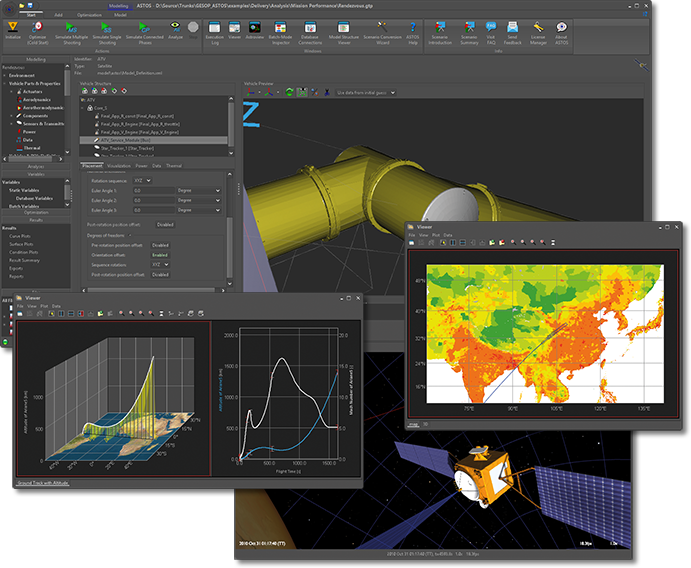
ASTOSAnalysis, Simulation and Trajectory Optimization Software for Space ApplicationsASTOS is a multi-purpose tool for space applications. Originally designed for trajectory optimization, it provides now modules for a variety of analysis, simulation and design capabilities for the whole project life-cycle. The built-in plotting and animation tools as well as its brought range of supported scenarios and applications bring ASTOS towards unique all-in-one software. Key features of ASTOS are its
Even though ASTOS is self-standing software it provides a variety of interfaces such that it can be easily integrated into an interdisciplinary working environment, e.g. SQL database and Excel import and export as well as support of many specialized data formats, e.g. CCSDS. The ASTOS software supports a wide range of mission analysis tasks, e.g.
The launcher development domain benefits from the ASTOS capabilities in the field of
Satellite programs will benefit from the mission analysis, system concept and re-entry safety features as well as the support for Lagrange point and interplanetary orbit dynamics. Detailed information on ASTOS for each addressed domain and application is given on dedicated subpages. 
|